Top Image: A small boat recues a seaman from the US Navy battleship USS West Virginia. “USS West Virginia (BB-48) burning at Pearl Harbor, December 7, 1941, Library of Congress.
“War is between countries. It has nothing to do with us as individuals. We have no quarrel. So, when the war ends, of course you should make up.”
-Takeshi Maeda
According to historian Michael Lucken, “the fragmented nature of Japan’s memories” in regard to World War II can be attributed to the fact that individuals experienced the war in different ways. In his book, The Japanese and the War: Expectation, Perception, and the Shaping of Memory, Lucken argues that there are distinct categories individual Japanese memory of the war can be divided into. These include expressions of frustration and rejection toward Japan’s military leaders after the war ended, an acceptance of responsibility for actions and atrocities committed during the war, as well as those who expressed regret and claimed they had been mistaken to allow themselves to be carried away by contemporary events. The oral history of Takeshi Maeda, a Japanese Imperial Navy pilot, demonstrates that the boundaries of these categories are often fluid, as his own memory of the war reflects aspects of each grouping. Moreover, Maeda’s oral history shows that the means of remembering and forgetting are dual processes that are inextricably linked.
Takeshi Maeda was born in 1921 in Fukui Prefecture, located west of Tokyo in the Chūbu region of Honshū. During preparatory school, Maeda had hopes of following in his father’s footsteps and becoming an architect. In 1938, he applied to the Tokyo School of the Arts and was quickly accepted, but when he went to pick up his diploma to formalize his enrollment, the military officers connected to his school refused to give him the document. At the time, Japan was already at war with China and, according to Maeda’s testimony, a lieutenant commander lambasted, “What the hell are you thinking of at a time like this? You’re what, gonna [sic] go to art school while we’re at war?” Since the Fukui Prefecture was a region where several top military-linked academics were located, the lieutenant commander “buttonholed” Maeda into revoking his previous acceptance and attending a military academy instead.
In his oral history, Maeda remembered thinking, “If I was going to go to a military school one way or another, then I should train to become a pilot.” After taking the appropriate entrance exams and physical tests, Maeda began flight school on September 1, 1938. After his first semester, Maeda was one of 200 air cadets selected out of 7,000 to actually train as a pilot. Due to wartime circumstances, the Imperial Navy continually urged military academies to produce graduates as quickly as possible. Consequently, while Maeda was enrolled in the Navy’s flight program, the Japanese military introduced a new accelerated curriculum for pilots, which shortened Maeda’s preflight training from three years to a year and a half. Like many air cadets, Maeda felt frustrated with the new fast-track since it omitted important “background courses,” such as advanced math and physics. Nevertheless, Maeda graduated with high marks and his first assignment was aboard the aircraft carrier, Kaga, which provided the first wave of bombers during the attack on Pearl Harbor.
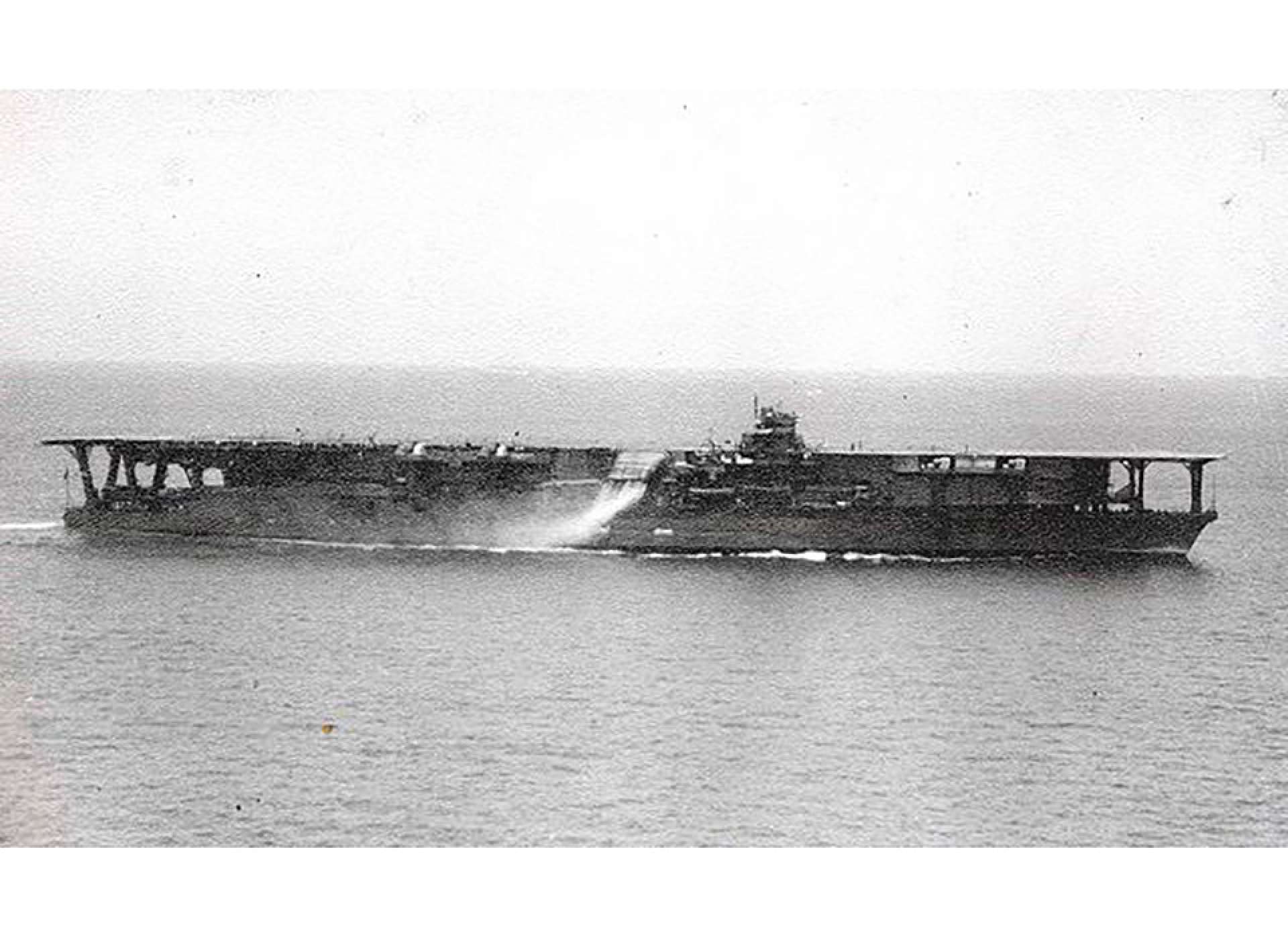
Imperial Japanese Navy Carrier Kaga after it was refitted. “Japanese Navy Carrier Kaga,” 1936, retrieved via Wikicommons.
A light rain fell the morning of December 6, 1941, the day before the planned Japanese attack on Pearl Harbor. Aboard the Kaga, which carried 12 planes for the scheduled assault, Medea felt trepidation due to the unprecedented nature of the mission. “There’s a certain amount of playing chicken involved with this when you’re releasing torpedoes at this close of a range…it takes a certain amount of luck to pull it off,” Maeda explained. Despite six months of intensive training in preparation for the attack, in order to successfully launch the torpedoes in the harbor’s short tracts of water, Maeda and his fellow pilots had to reduce their approach from the minimum 1,000 meters to just 700 meters. Since the pilots had to clear the harbor buildings before dropping to 10 meters above water, “it was critical to get the approach just right.” The “short run-up” meant that it was especially important not to drop the torpedoes too quickly.
On the morning of December 7, 1941, Maeda remembers hearing Glen Miller’s “Sunrise Serenade” being broadcast to the US forces in Hawaii through his radio, which reassured him that the attack on Pearl Harbor was not expected by the Americans. Maeda flew the Nakajima, or the Kate Class fighter, which he remembered as “a steady flying plane, a good performer.” Maeda’s bomber carried a single 830 kg air torpedo that had been specifically designed for use in shallow water. Special wooden fins prevented the torpedo from diving too deeply beneath the water’s surface and getting stuck in the harbor’s sandy floor. Since radio silence was strictly enforced, the command to attack was never voiced, but signaled by a flare fired from the attack commander, Mitsuo Fuchida. After seeing Fuchida’s flare signal, Maeda and his fellow torpedo bombers formed a single-file line for the final approach.
Maeda flew the second aircraft behind the company commander—both had been ordered to target the USS West Virginia. After the company commander dropped the first torpedo, Maeda released a second, which directly struck the ship. After Maeda’s direct hit, eight other torpedoes struck the vessel, eventually sinking it to the bottom of the harbor. Despite being only the second aircraft in formation, he was surprised at the speed of the American reaction, his plane “jolting violently as it was hit by anti-aircraft fire” as he banked left to return to the aircraft carrier.
The remainder of the Kaga crews were not as fortunate, with five out of the original 12 planes shot down. Maeda attributes this failure to “the parameters of the attack, the limited space [they] had to work with, and the way they banked out of the attack.” Instead of turning left toward the relative safety of the open ocean, the five crews who were shot down veered right, putting them in a direct line with “a gauntlet” of smaller ships along the inland side of the harbor.
With the first wave of the attack completed in just half an hour, Maeda’s role at Pearl Harbor lasted little more than a few minutes but, ironically, his torpedo attack on the USS West Virginia came back to haunt him later in the war. During the Battle of Okinawa in 1945, Maeda often took part in night attacks against US ships. On one particular night he recalled,
“Flares were dropped from spotter aircraft to illuminate the ships as we moved in. And under all these flares, [what] should I see traveling by in this Okinawa battle but the West Virginia. I was thinking to myself, the West Virginia? What is the West Virginia doing here, how could that be? It should have been completely out of commission, but there it was.”
Years later, Maeda discovered that due to Pearl Harbor’s shallow water and the confined conditions of the port, the United States managed to salvage and repair several ships, one of which was the West Virginia.
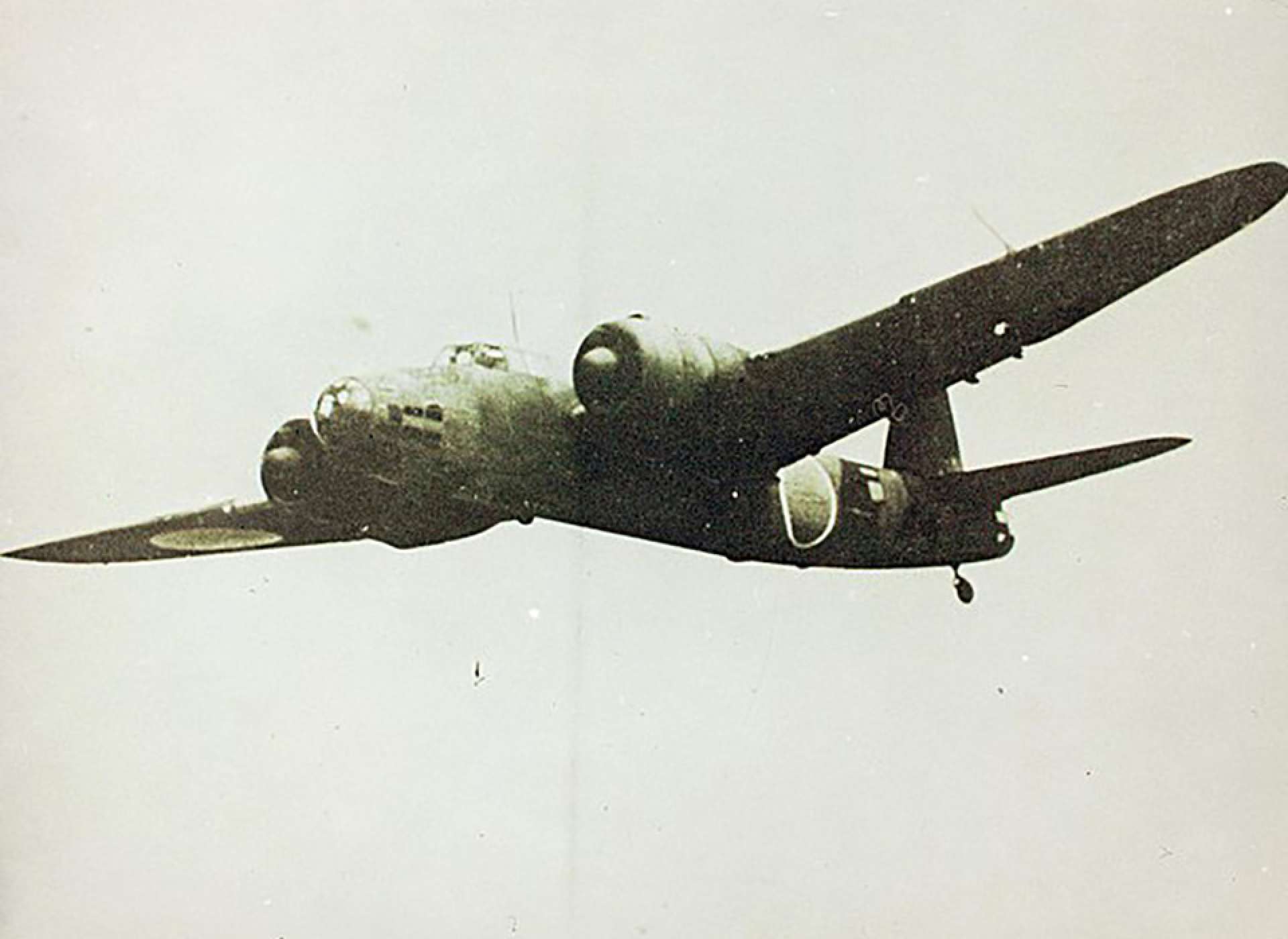
A Nakajima, or the Kate Class fighter, similar to the one Maeda flew during the attack on Pearl Harbor. “Nakajima Type 100, Ki-49, Donryu,” San Diego Air and Space Museum.
Maeda flew combat missions in several other major battles in the Pacific, but in August 1945 he was forced to join the ranks of the Kamikaze pilots’ Special Attack Force. This was the first instance in which Maeda started to question the decisions made by his military commanders. He stated, “I had accumulated 3,800 hours of combat flying experience. I couldn’t believe my commanders wanted to waste all that in a single mission.”
The incident was a turning point for Maeda as he began to recognize the fallibility of Japan’s leaders and the recklessness with which they treated the lives of the Japanese people over the course of the war. Maeda’s Kamikaze flight was scheduled to take place on August 16, 1945, but the atomic bombings of Hiroshima and Nagasaki led to the Japanese to surrender on August 14, 1945, just two days prior to the dreaded mission. The last-minute twist of fate led Maeda to believe that the use of atomic weapons by the United States against Japan resulted in more Japanese lives saved than were lost.
Maeda’s views on war changed throughout his life as he continued to question decisions made by the Japanese military leadership. For example, an entire section of Maeda’s oral history is devoted to questions related to the overall strategy behind the attack on Pearl Harbor:
“I’ve been thinking a lot about this…when we attacked Hawaii, we centered only on the planes, the fighter planes, the warships, and so on, but we didn’t target the docks, the fuel tanks, or any of the supporting infrastructure in these attacks at all…Had we done that then the warships at Pearl Harbor would’ve lost their functional ability for much longer than they actually did based on the attack we launched.”
When pressed further to explain specific problems at Pearl Harbor, Maeda said he was particularly angry at the commander of the attack group for misreading signals, which caused confusion among the bombers. While Maeda believes that the attack on Pearl Harbor should have been conducted in a more “strategic and robust” manner, he concedes that it probably would not have changed the outcome of the war, the root of which he believed stemmed from long-lasting problems with communication, or lack thereof, among the empire’s top military leaders.
Maeda’s rejection of his commanding officer’s decision to place him in a Kamikaze unit, his feelings of frustration due to the lack of strategy behind the Pearl Harbor assault, and the rationalization that lack of communication was the reason behind Japan’s loss during World War II are common examples of the way many veterans dealt with Japan’s devastating defeat. Since remembering is always paired with the process of forgetting, the historian Yoshikuni Igarashi argues, “the actual process of forgetting the loss was not an easy one: it involved a constant struggle to render memories of the war into a benign, nostalgic form.”
It is clear that in the wake of defeat, Maeda thought a lot about the war and was able to construct his own personal memory and rationale for the outcome based on his experiences, information obtained from the media, and other veterans of the war. Narrative explanations for the defeat such as Maeda’s were common in Japan, since it allowed individuals to justify participation despite the radical historical changes the nation had endured.
As Maeda made sense of his wartime experience and his view on warfare changed, he became involved in a number of reconciliation initiatives. Most famously, Maeda made US headlines for a speech he gave in 1991 at the Symposium for the US Pearl Harbor Association in Hawaii, which ended with the words “Pearl Harbor—never again.” That same year, Maeda brought a group of Japanese veterans to the commemoration for the 50th anniversary of the attack and attended the opening of the Pearl Harbor Aviation Museum. Leading up to these events, Maeda had spent 12 years working on the Japanese side to develop the relationship between Japanese and American veterans of Pearl Harbor, eventually becoming a member of the Japan-US Cultural Exchange Committee.
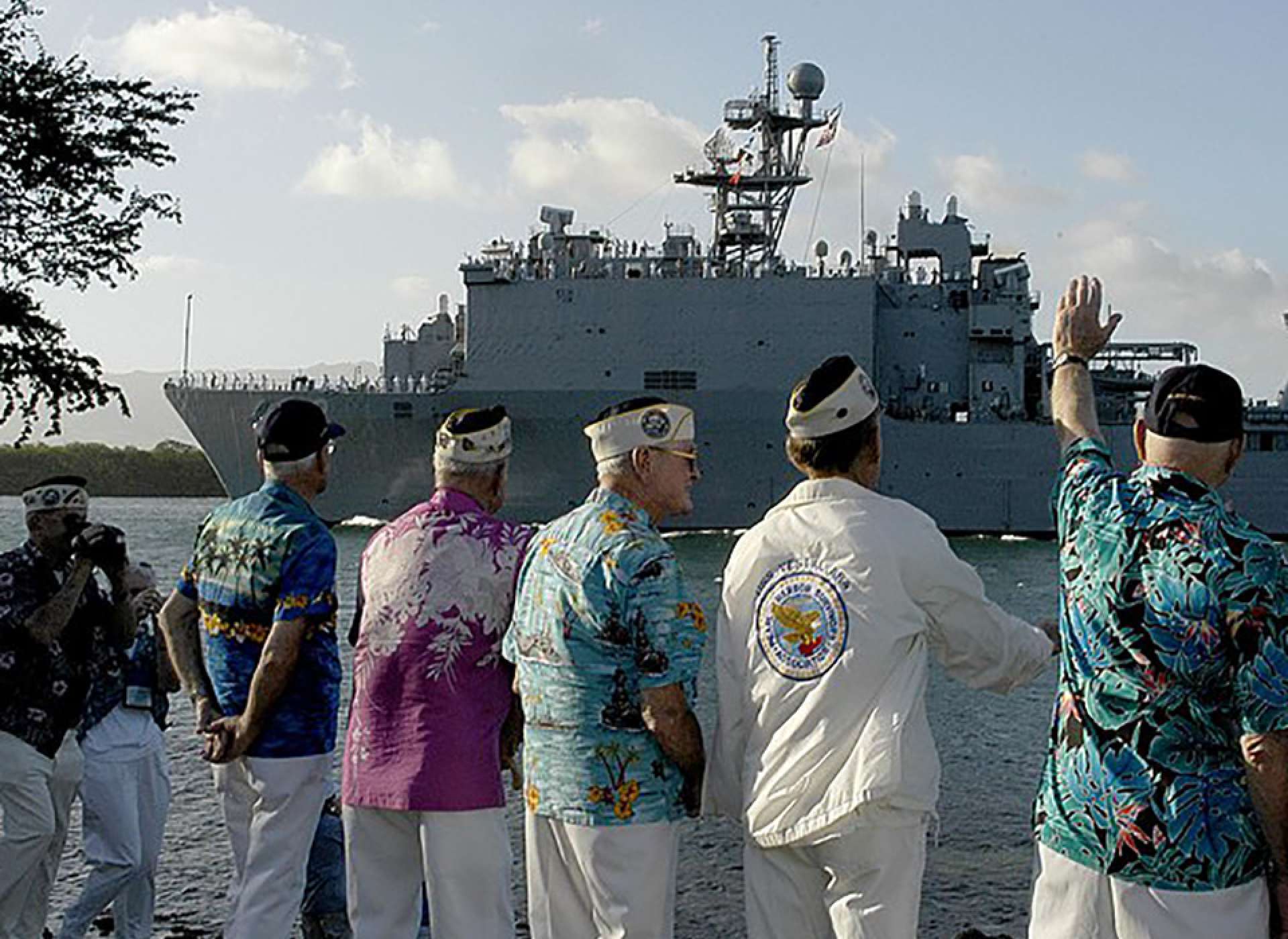
Survivors and guests wave to the USS Pearl Harbor during a joint US Navy/National Park Service ceremony commemorating the 65th Anniversary of the attack on Pearl Harbor. “US Navy 061208-N-1280S-001 Pearl Harbor Survivors wave to USS Pearl Harbor (LSD 53) during a commemoration ceremony for USS Nevada (BB 36),” December 8, 2006, US Navy photo, retrieved via Wikicommons.
In 2006, Maeda and two other Japanese veterans of Pearl Harbor united with Americans who survived the attack for a five-day series of observations in Hawaii. As part of this event, Maeda performed a “handshake reconciliation service” with a survivor of the USS West Virginia. In Maeda’s own words he describes the event:
“So there I was, rather unexpectedly, and everything is lit up and wired for sound and it was in that situation that for the first time in my life I meet, face to face, my counterpart from the American side. They told me that he was a crew member of the West Virginia, and so the first thing I said was, ‘I’m very sorry.’ I’m sorry because you know, here I am, someone who had sunk this man’s ship, and of course he’s standing [there] as a survivor…But his answer was, ‘Well don’t be sorry, you don’t have anything to be sorry about.’”
The man shaking Maeda’s hand was John Rauschkolb, a Navy signalman, who stood on the West Virginia’s port side as a series of Japanese planes pummeled the battleship with torpedoes and bombs. Rauschkolb had to swim under burning fuel to escape bullets being fired at him from a Japanese Zero fighter. In an interview after the event, Rauschkolb stated “I’ve never held anything against them. They were doing their job. I was doing my job. We were military. They were taking orders. I was taking orders.”
As part of his reconciliation efforts, Maeda also made many close American friends, several of whom were on the West Virginia the day he helped sink it. “I was able to develop a relationship with some of my American counterparts. The sailors, the crews, on the US Navy ships during the Pacific conflict, a lot of these people became friends of mine.” Richard Fiske, for instance, was a Marine bugler aboard the West Virginia and, after meeting Maeda, the two became close friends, visiting each other regularly until Fiske’s death in 2004.
During one visit to Japan, Maeda presented Fiske with a medal on behalf of the Japanese government for working as his counterpart in facilitating understanding between United States and Japanese veterans. By commemorating annual anniversaries at Pearl Harbor and developing friendships, veterans on both sides actively engaged in forgetting past tensions, creating a new way to remember the war based on peace, understanding, and absolution.
According to the historian Yoshikuni Igarashi, memory does not exist outside of history, but “connotes what is personal and emotional in an individual’s relation to the past,” often reflecting an individual’s cultural desires and anxieties. Maeda’s recollection of past events in his oral history fits this analysis. In reconstructing his memory of the war, Maeda developed narratives to make the defeat in World War II more comprehensible. At various times he expresses frustration and rejection towards Japan’s military leaders, articulates regret, and accepts responsibility for his actions during the war. Moreover, Maeda’s focus on reconciliation, understanding, and peace in his oral history demonstrates how memory changes over time as the past is signified and forgotten through the mediation of history.
Jennifer Popowycz, PhD
Jennifer Popowycz, PhD is the Leventhal Research Fellow at The National WWII Museum. Her research focuses on the Eastern Front and Nazi occupation policies in Eastern Europe in World War II.
Cite this article:
MLA Citation:
APA Citation:
Chicago Style Citation:
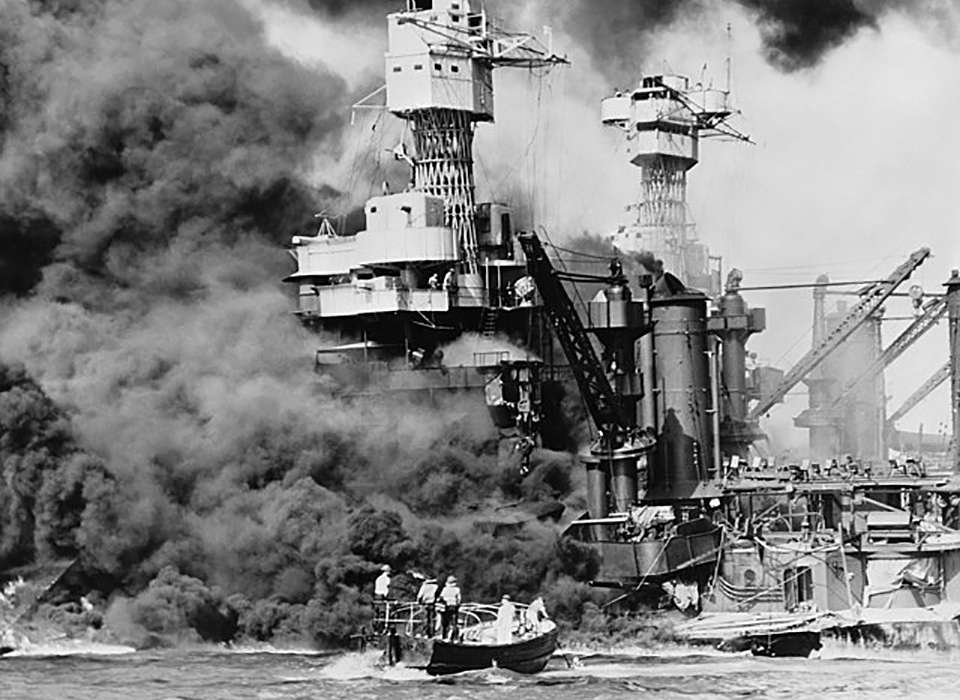
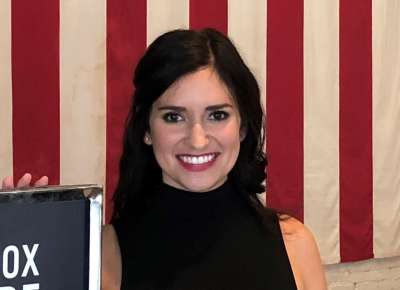




![Max Fuchs, New York City cantor, sings as Rabbi Sydney [sic] Lefkowitz, Richmond, VA, conducts the first Jewish services from Germany.](/sites/default/files/styles/max_650x650/public/2025-10/image1.jpg)


